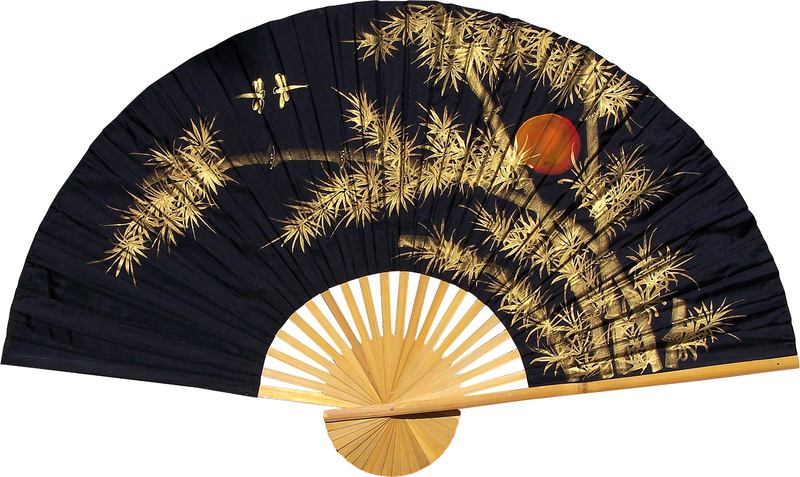Chinese Folding Fan 紙扇
Dublin Core
Title
Chinese Folding Fan 紙扇
Subject
Fan, Folk art, Decoration, Calligraphy
Description
Handheld fan, or simply hand fan, may be any broad, flat surface that is waved back-and-forth to create an airflow. Generally, purpose-made handheld fans are folding fans, which are shaped like a sector of a circle.
Date
Northern and Southern Dynasties (420-589 AD)
Format
Hand-held size, Sector shape
Type
Craft
Crafts Item Type Metadata
Crafting Methods
It is made of a thin material (such as paper or feathers) mounted on slats which revolve around a pivot so that it can be closed when not in use. The folding fan is composed of sticks (the outer two called guards) held together at the handle end by a rivet or pin. On the sticks is mounted a leaf that is pleated so that the fan may be opened or closed.
The production of a folding fan involves intense manual work of around 145 procedures, including dying, gluing, painting, engraving, and inlaying work.
There are a wide range of options for materials of fan ribs, including bamboo, sandalwood, ebony, tortoiseshell, ivory, mother of pearl, bones, etc., with bamboo the most common. The application of precious materials not only make the fans more visually-appealing, but also increase their value.
The production of a folding fan involves intense manual work of around 145 procedures, including dying, gluing, painting, engraving, and inlaying work.
There are a wide range of options for materials of fan ribs, including bamboo, sandalwood, ebony, tortoiseshell, ivory, mother of pearl, bones, etc., with bamboo the most common. The application of precious materials not only make the fans more visually-appealing, but also increase their value.
Materials
Wood, Bamboo, Fabric
Usage and Application
In the Ming dynasty, folding fans had such a rapid development thanks to the support of the royal court that they became a necessary accessory to an elegant life. This form of art reached its heyday in the later Qing dynasty (1644-1912 AD), a little too widespread in the eyes of some. It was a popular tradition of exchanging folding fans with pieces of calligraphy and painting of poetic landscapes on the panel as gifts of friendship among the literati, especially in the Jiangnan area of China, namely, the lower reaches of the Yangtze River, where men of letters and artists clustered during that period. When it came to the Republic of China era (1912-1949 AD), folding fans became valuable items for collection while continuing to fulfill the function of expressing friendship.
Panel calligraphies and paintings, featuring natural, refreshing and lively styles, achieved popularity with the aid of the special form of folding fan panels. Many people at that time took pride in the possession of one folding fan with painting or calligraphy by a well-known artist.
Panel calligraphies and paintings, featuring natural, refreshing and lively styles, achieved popularity with the aid of the special form of folding fan panels. Many people at that time took pride in the possession of one folding fan with painting or calligraphy by a well-known artist.
Interesting Facts
It has been popular to draw fans or write poems about fans, and paint or write on paper fans. There is a story about Wang Xizhi (303-361 AD), who is best known for his mastery of Chinese calligraphy. He is regarded as one of the greatest Chinese calligraphers in history and his works have exerted a far-reaching influence on future generations. However, it is a pity his works were lost and only the replicas in the Tang Dynasty (618-907 AD) have been preserved till today. It is said that once Wang saw an elderly lady selling fans. As it was the end of the summer, business was not so good. She looked very upset, so Wang decided to help her. He wrote a few characters on each fan and told the old woman to raise the price. On seeing calligraphy by Wang on those fans, people all competed to buy them, which then sold out very quickly.
Collection
Citation
“Chinese Folding Fan 紙扇
,” CCCH9051 Group 64, accessed October 7, 2025, https://learning.hku.hk/ccch9051/group-64/items/show/24.
,” CCCH9051 Group 64, accessed October 7, 2025, https://learning.hku.hk/ccch9051/group-64/items/show/24.

